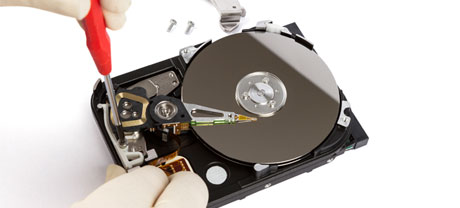For people with a website or an app, pace is critical. The faster your web site functions and then the quicker your web applications perform, the better for everyone. Since a site is just an assortment of files that connect to each other, the systems that store and work with these files play a huge role in site efficiency.
Hard disk drives, or HDDs, were, until the past few years, the more effective systems for keeping data. Having said that, recently solid–state drives, or SSDs, are already gaining interest. Look into our comparison chart to see if HDDs or SSDs are better for you.
1. Access Time
Because of a radical new method of disk drive performance, SSD drives allow for considerably faster data accessibility speeds. Having an SSD, data access instances tend to be lower (as small as 0.1 millisecond).
HDD drives still take advantage of the very same general file access concept that was originally created in the 1950s. Though it has been substantially enhanced consequently, it’s sluggish as compared with what SSDs are offering to you. HDD drives’ file access speed varies between 5 and 8 milliseconds.
2. Random I/O Performance
On account of the unique significant file storage method shared by SSDs, they furnish quicker file access speeds and speedier random I/O performance.
All through our tests, all SSDs showed their capability to take care of at the very least 6000 IO’s per second.
Throughout the same trials, the HDD drives proved to be significantly slower, with simply 400 IO operations addressed per second. Even though this feels like a great number, if you have a busy server that contains many popular web sites, a sluggish disk drive may lead to slow–loading web sites.
3. Reliability
SSD drives are created to have as fewer moving elements as is possible. They use a similar technique like the one employed in flash drives and are also much more reliable when compared to standard HDD drives.
SSDs provide an average failing rate of 0.5%.
With an HDD drive to operate, it should rotate a few metal disks at more than 7200 rpm, having them magnetically stabilized in mid–air. They have a many moving components, motors, magnets as well as other devices jammed in a small place. Therefore it’s no surprise that the common rate of failing of any HDD drive varies in between 2% and 5%.
4. Energy Conservation
SSDs do not have moving components and need minimal chilling power. In addition they call for very little electricity to perform – tests have established they can be operated by a standard AA battery.
As a whole, SSDs use up amongst 2 and 5 watts.
From the minute they have been built, HDDs have invariably been quite electrical power–greedy systems. So when you’ve got a hosting server with numerous HDD drives, this will add to the regular monthly electric bill.
On average, HDDs take in in between 6 and 15 watts.
5. CPU Power
As a result of SSD drives’ higher I/O efficiency, the main hosting server CPU will be able to work with data file queries a lot quicker and conserve time for other operations.
The common I/O wait for SSD drives is exactly 1%.
When using an HDD, you need to devote extra time looking forward to the results of one’s data request. Because of this the CPU will stay idle for much more time, expecting the HDD to react.
The regular I/O wait for HDD drives is about 7%.
6.Input/Output Request Times
It’s about time for several real–world instances. We, at HostRing, produced an entire system backup with a web server using only SSDs for data storage purposes. In that process, the typical service time for any I/O demand stayed under 20 ms.
During the same trials sticking with the same hosting server, now fitted out with HDDs, effectiveness was significantly reduced. During the hosting server back–up process, the regular service time for I/O demands fluctuated somewhere between 400 and 500 ms.
7. Backup Rates
Referring to back ups and SSDs – we’ve spotted a great improvement in the back up rate as we switched to SSDs. Today, a normal web server data backup requires solely 6 hours.
We made use of HDDs exclusively for quite a while and we have excellent familiarity with just how an HDD runs. Creating a backup for a server furnished with HDD drives will take around 20 to 24 hours.
To be able to immediately improve the overall efficiency of your web sites while not having to modify any code, an SSD–equipped web hosting solution will be a excellent choice. Look at the Linux shared web hosting packages and the Linux VPS hosting – these hosting solutions feature swift SSD drives and are offered at good prices.
Hepsia
- Live Demo
Service guarantees
- Register today. There won’t be configuration fees and you will have complete SSH/full root access to the server. 99.9% network uptime is guaranteed.
Compare our prices
- Examine the resources and characteristics offered by our Virtual Private Servers. You could begin with a cheaper VPS Hosting package and move up with just a click of the mouse as your requirements increase.
- Compare our hosting plans
Contact Us
- It is easy to get in touch with us night and day by email or by using our super–fast ticketing system. Our company offers a 1–hour response time warranty.















